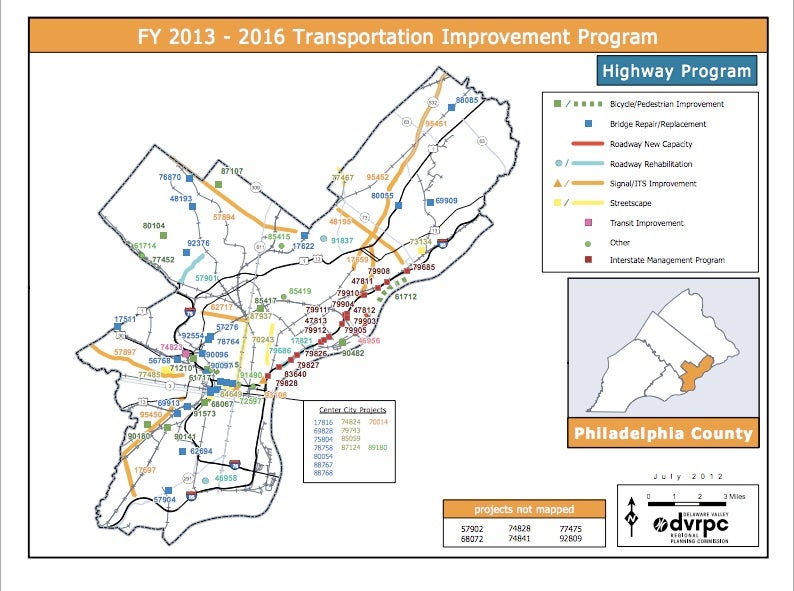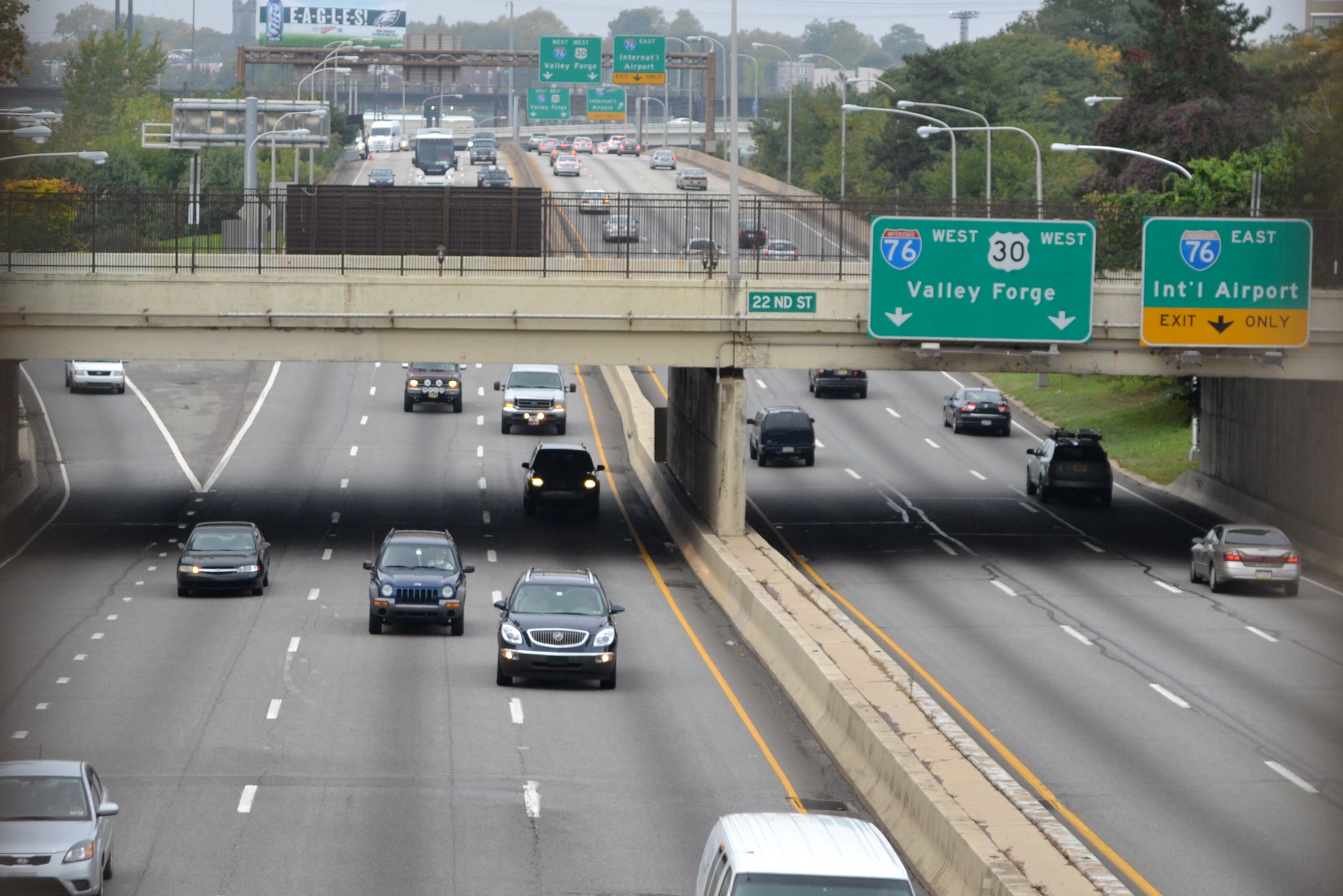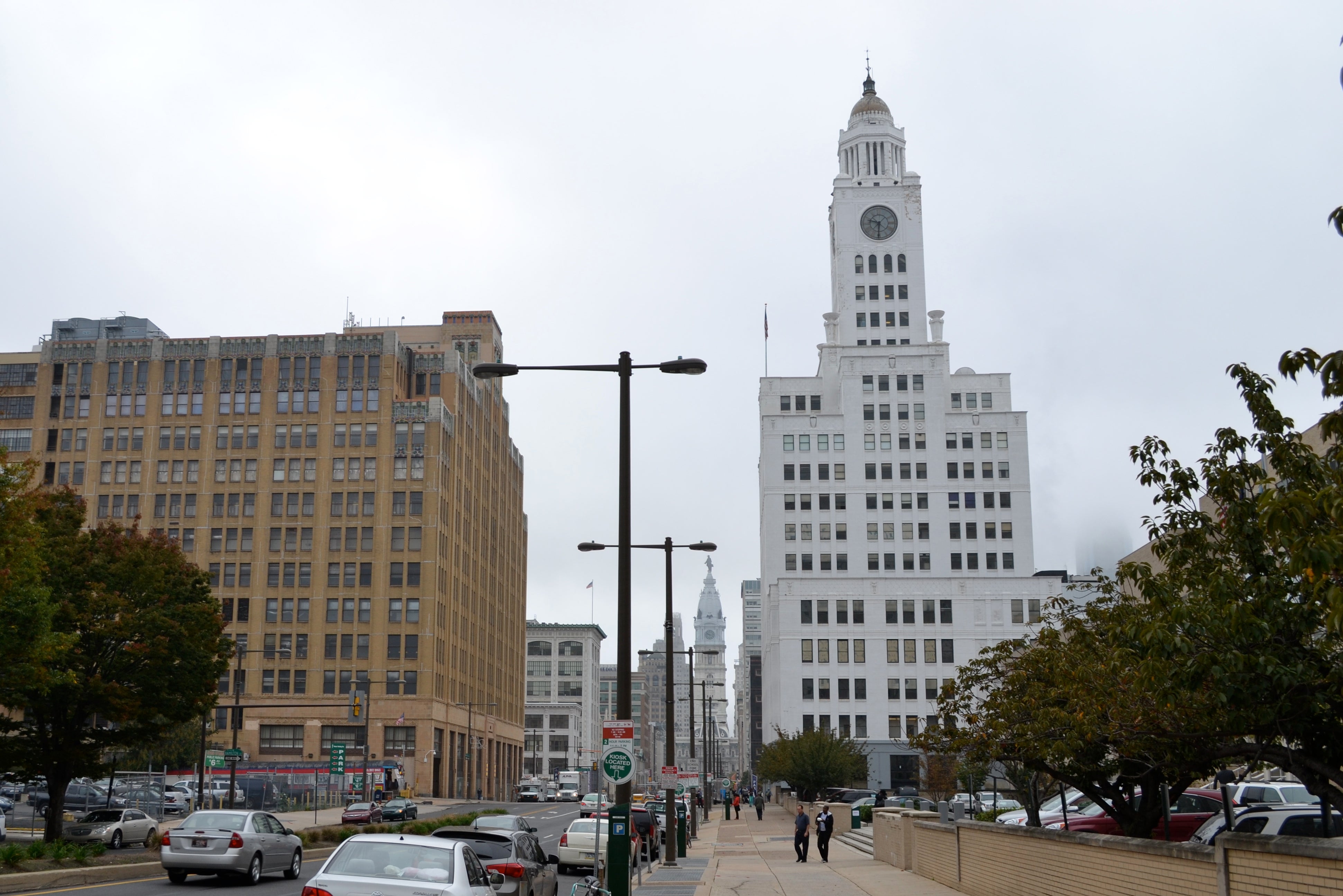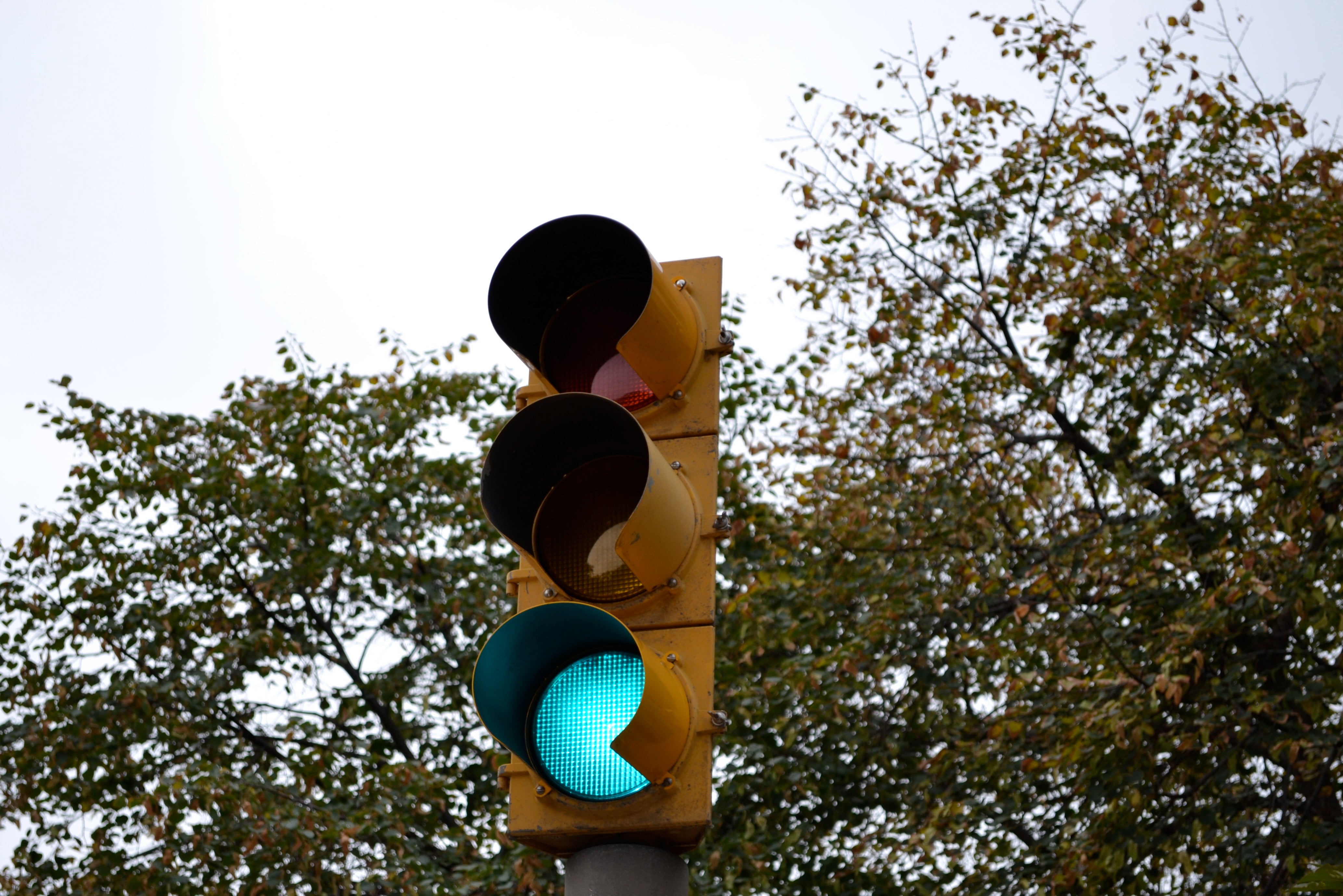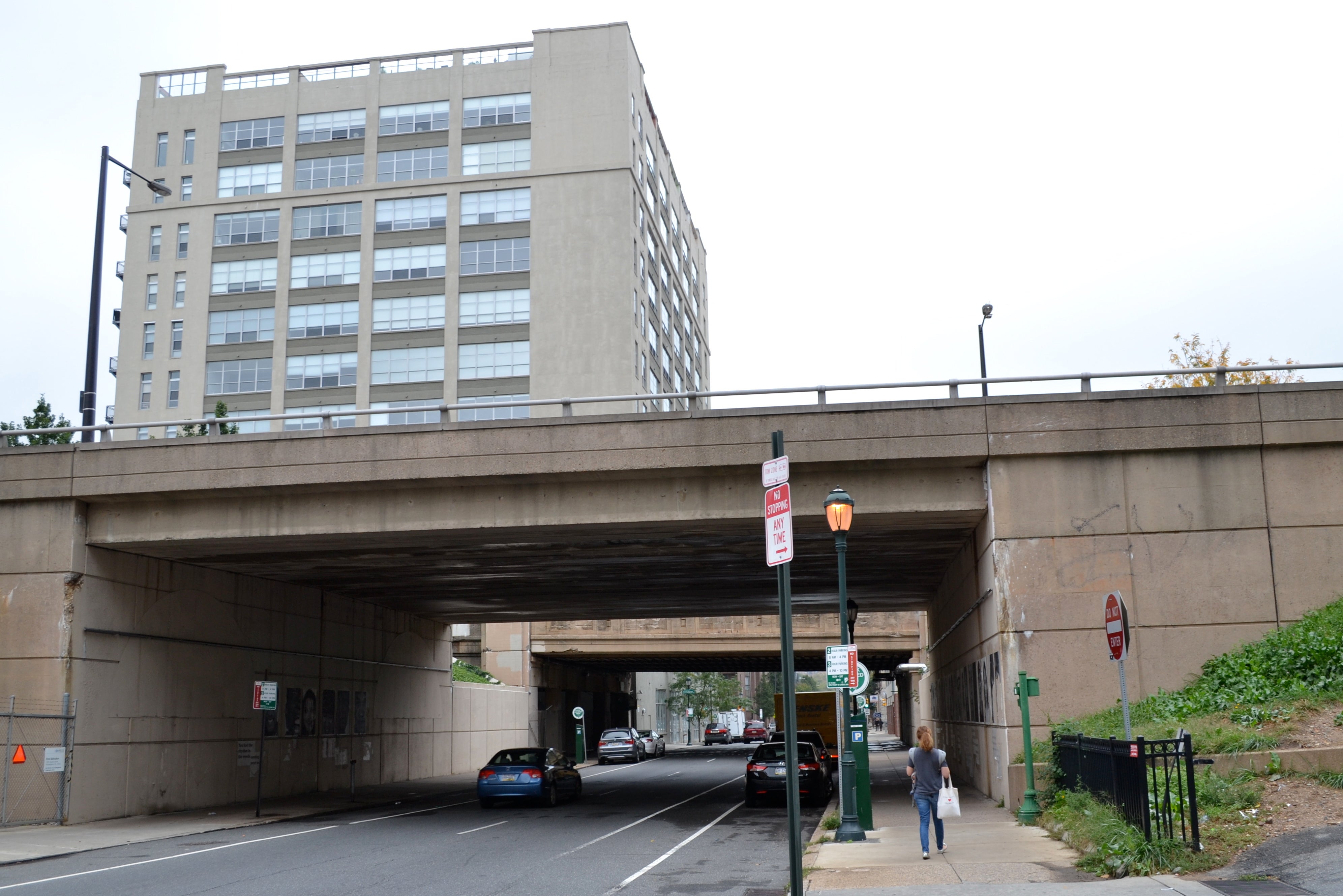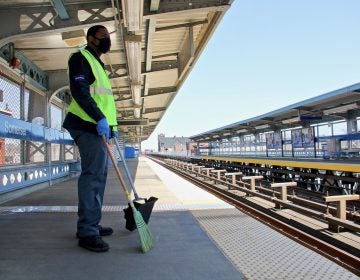DVRPC approves $3.8 billion in highway and transit improvements for Southeastern Pennsylvania
The Delaware Valley Regional Planning Commission approved more than $3.8 billion in highway and transit improvements for southeastern Pennsylvania when it adopted the DVRPC FY2013 Transportation Improvement Program for Pennsylvania early this month.
The TIP is a prioritized list of transportation projects that intend to use federal or state funds during fiscal years 2013 through 2016. The list includes how much funding has been allocated to each project.
Though DVRPC has a 12-year outlook, “the projects that are within the four years really are the priorities for the region,” said Elizabeth Schoonmaker, DVRPC Office of Capital Programs manager. The federally mandated TIP is critical as “it’s what enables our region to receive and spend federal dollars,” she said.
The FY 2013 TIP includes nearly 400 projects in Philadelphia, Bucks, Chester, Montgomery and Delaware counties.
Despite such high numbers, funding for the FY 2013 TIP is approximately 30 percent lower than funding was for the FY 2009 TIP.
“Transportation is a really critical issue for the region, and there is not enough funding,” Schoonmaker said.
The TIP has a multimodal focus and in FY 2013 the projects listed to receive funds range from transit signal priority upgrades and north Broad Street pedestrian streetscape improvement to several bridge construction projects, I-95 reconstruction and SEPTA’s new payment technologies.
The full TIP and project descriptions along with allocated funding can be viewed online through DVRPC’s interactive web-based map.
Transit Signal Priority Upgrades
The TIP includes three Philadelphia county transit signal priority upgrades on the Woodland Ave corridor from 42nd Street to Island Ave, Bustleton Ave North from Bucks County Line to Benton Ave and Bustleton Ave South from Benton Ave to Frankford Ave.
The TSP projects will outfit the buses and steel-wheeled trolleys that serve these corridors with optical emitters that will allow for coordination between the vehicles and the light signals. The program will upgrade existing traffic controllers so that they can be connected via fiber optic cable to the city’s Traffic Operations Center. The goal is to make public transit routes and traffic flow on the routes more efficient.
Schoonmaker said these upgrades are one way DVRPC is working to make improvements without adding major costs, or working to do “a little more with a little less.”
Other elements of the three TSP items include installation of pedestrian countdown signals, ADA ramps upgrades and traffic monitoring cameras.
The TSP projects are listed to receive approximately $12.35 million in FY2013 and $22.35 million from FY 2013 through FY 2016.
Pedestrian Streetscape Improvements
Today Broad Street just north of City Hall is drastically different than Broad Street just south of City Hall, but the city has plans for a $50 million, multi-purpose streetscape enhancement for the nearly four miles of Broad Street spanning from the north side of City Hall to Glenwood Ave.
The Avenue of the Arts Revitalization and Streetscape project will bring 64 lighting masts to the Broad Street median, 480 new trees to the east and west sides of the corridor and new lighting on each of the 40 east-west cross streets from 13th to 15th streets. One goal of the project is to bring uniformity to the corridor as it grows. Another is to bring together several North Broad communities.
In FY 2013 the TIP currently lists approximately $9.7 million for the Avenue of the Arts Revitalization and Streetscape project.
Bridge Construction Projects
The first two of seven structurally deficient Vine Street bridges over I-676 will be replaced or rehabilitated beginning, at the earliest, in June 2013. The bridges at 21st and 22nd street over I-676 north of the Winter Street intersection make up phase one of this three-phase, $130 million bridge rehabilitation and replacement project. According to the TIP these bridges will receive $2.3 million in FY 2013.
Just south of the Vine Street construction, superstructure replacement or rehabilitation of the JFK Boulevard Bridge over 21st, 22nd and 23rd streets will receive $436,000 in FY 2013 funds.
The TIP lists $2.5 million in final design funding for the Chestnut Street bridges over I-76, the Schuylkill River, CSX Railroad and 24th Street. Each portion of the span is different from the other portions, some of which date back to 1864, but all have severe rust and advanced section loss.
Grays Ferry Avenue Bridge and the Platt Bridge, both over the Schuylkill River, will also see FY 2013 funding. The Grays Ferry Bridge will receive $371,000 in final design funding for the project to rehabilitate or replace the span between Woodland Ave and 34th Street. The Platt Bridge is listed to receive $5 million in construction funds to rehabilitate the existing structure and improve the northbound ramp merge with the I-95 eastbound ramp just south of the bridge.
Away from the Schuylkill River, the TIP allocates nearly $3.2 million in FY 2013 funds for utility relocation work associated with the Montgomery Avenue Bridge over Amtrak at 30th Street. This project will completely reconstruct the current bridge, which was built in 1913 and spans Amtrak’s Northeast Corridor, with a three span, steel girder bridge.
I-95 reconstruction
One of the largest programs included in the TIP is the I-95 construction work.
“That’s a very large effort for the region,” Schoonmaker said. “It’s a $2 billion series of projects really.”
The series of work has been broken out into 20 separate project listings and will repair, reconstruct and restore Section A of I-95, which spans from Northern Liberties to Holmesburg.
Some of the 20 projects are also part of the Statewide Interstate Management Program, PennDOT’s four-year listing of interstate maintenance projects.
New Payment Technologies
One highly anticipated project, the New Payment Technology fare collection system, is projected to cost $228.8 million. In Fiscal Years 2013-2018, $201.1 million is programmed toward this project. The remaining $18.7 million was provided in past years.
The New Payment Technology project will update SEPTA’s fare payment system and offer electronic fare media that will allow users to pay through contactless cards and potentially phones. The first phase of the project will include complete design, pilot testing and data network and customer support system development. The second phase will deploy the system on trolley, heavy rail and bus fleets as well as test the technology on regional rail routes. The third phase will deploy the system to regional rail service, parking operations and customized community transportation systems.
In FY 2013 alone, the TIP lists $2.6 million for the New Payment Technologies.
“We’re very excited to see that project advancing,” Schoonmaker said. “It’s something that was identified as a top public concern for many years.”
Contact the reporter at cfisher@planphilly.com
WHYY is your source for fact-based, in-depth journalism and information. As a nonprofit organization, we rely on financial support from readers like you. Please give today.



